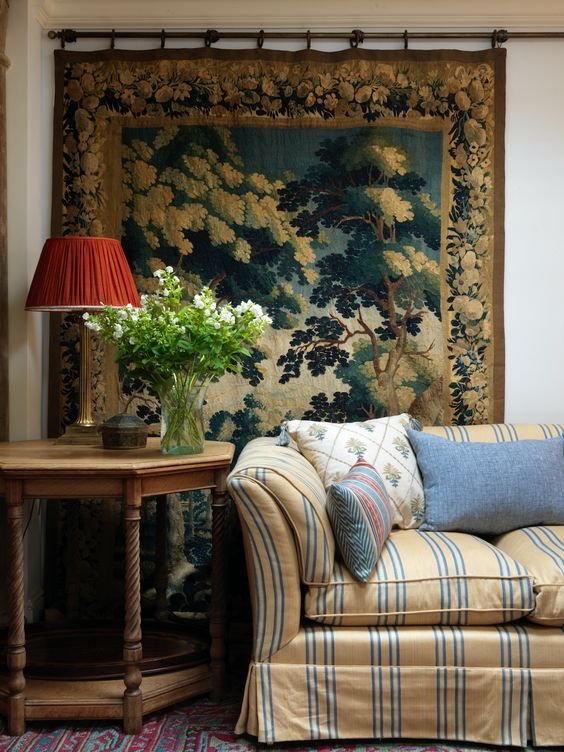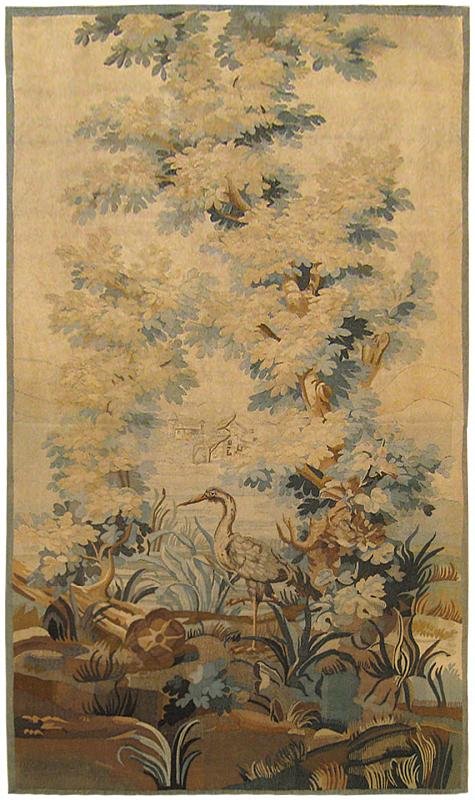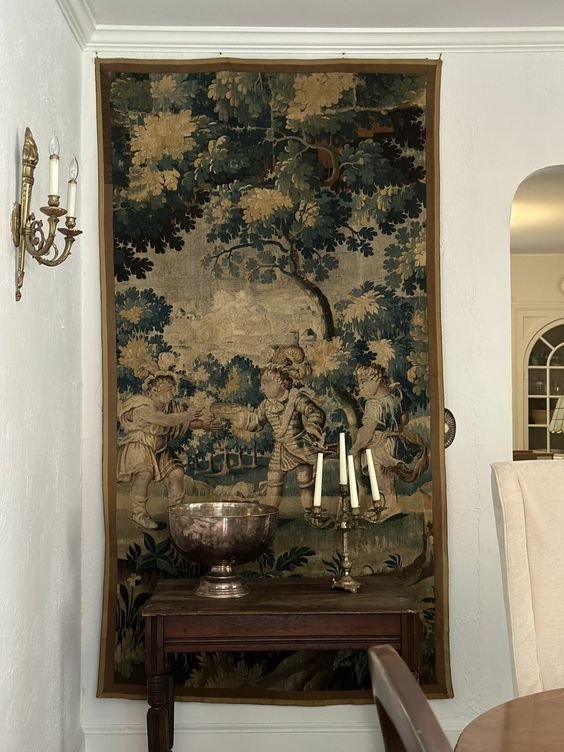Verdure Tapestry; Green, Lush, Vegetation
A Tapestry is a weaving technique and textile wall hanging. They are a form of textile art woven by hand or on loom used for hanging curtains and upholstery. Two dimensional and using a warp wrapping technique they are derived from the French word Tapisser (to cover) or Tapis meaning heavy fabric, carpet or rug. Tapestries drape the walls of castles for warmth and insulation during the winter as well as decorative display and often used outside for special occasions. Smaller pieces were made for cushions, curtains and bed hangings. In the 17th & 18th centuries there was an increase in landscapes, hunting scenes and rural life as seen in many of the Verdure tapestries below.
Verdure derives from verdant meaning green, lush, vegetation.
Verdure Tapestry-4.10x6.9
Flemish Verdure Tapestry- 7.4x9
Antique 17th Century Flemish Verdure Tapestry-9.6x9.9
18th Century Tapestry Pillow
French Aubusson Tapestry Panel
7th Century French Verdure Landscape Tapestry
















